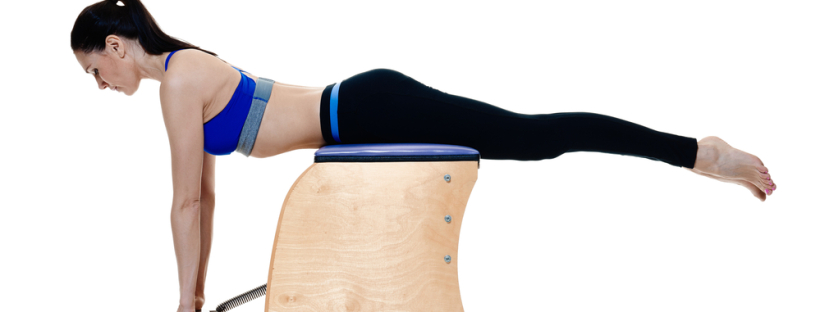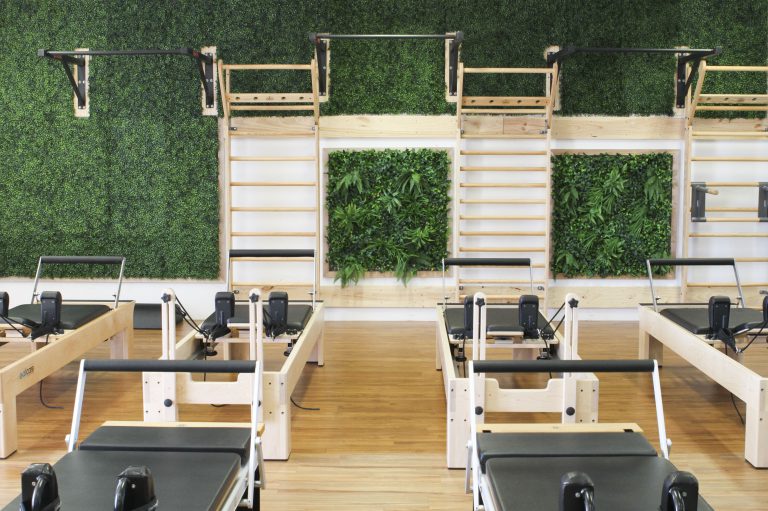Wunda chair
What is the Wunda chair? A wunda chair, low chair or Pilates chair is an additional resistive exercise equipment to the standard Pilates reformer that incorporates the use of springs for resistance which means that muscles are worked eccentrically and concentrically giving them strength and length through their entire range of movement . It is designed as a box with one side having a pedal that is pressed down using spring resistance. The pedal can also be separated into two parts to allow for independent body segment use. The benefit of using a Wunda Chair in Pilates is that anyone can use it, and everyone can achieve amazing results. Initially starting with quite simple and deconstructed movements and progress quickly to a very dynamic and challenging exercises. The apparatus allows you to work through all planes of movement without any excessive bouncing or jarring movements. The Wunda Chair sole purpose is to use the resistance of springs to develop strength and body awareness. Many exercises are done sitting, standing, lying, or kneeling, which promote greater functional postures and improve functions of daily living. In many ways the Wunda Chair exercises can simulate movements of daily life more closely and allows a patient to break down activities into segments they may be struggling with, as a result allowing the Wunda chair to be a great rehabilitation device.
Spine Corrector
The spine corrector extra apparatus used in the clinical setting to help with as the name suggests movement of the spine. It is made from either wood and leather for the sturdier studio version, or from foam for a light-weight alternative. The spine corrector primary function in the rehabilitation and exercise setting is to be used to assist spinal movements and for abdominal exercises. The spine corrector’s compact design means it can easily be placed on top of the trapeze table and reformer. This allows for the device to be used as an adjunct with other pieces of equipment to increase the range of movement during certain exercises. The benefits of the spine corrector are simple you probably do not spend much time rotating or extending your spine. This to you might not seem like a big deal, but it is problematic when it comes to our spine. Modern life forces us to spend hours slumped forward over a computer, which results in hunched postures, sore backs, and a whole host of other health problems. To counter this – and keep our spine healthy – we need to be moving the body in all directions. This is where the spine corrector comes in. Their rounded surfaces support these extension and side-bending movements and through this help to improve the mobility, flexibility, and strength of the spine.
Of course, side bending, spine extension, spine flexion and rotation are possible without the spine corrector, but these curved surfaces support the spine and encourage it to move more evenly when creating these shapes. This make these exercises safer and more attainable, which is especially helpful when it comes to teaching Pilates to pregnant women, people with injuries or beginners.
Trapeze table
The trapeze table was the first apparatus created to help rehabilitate a range of patients. How does it work? The device is very simple in it’s set up. Its broken into sections and attachments to allow to maximise it’s use to its fullest potential. The springs are different tensions and can be easily attached to the loops that cover the metal uprights. Using these loops at varying heights, allows exercises to strengthen and mobilise muscle and joints in wide range of postures from lying down, side lying, kneeling, or standing. The push bar can be sprung with springs of different tensions to alter the difficulty level of exercises. It can be used by both hands and feet. It can support more basic movements as well as challenging ones.
The hanging trapeze swing can be attached to the top of the frame and used in a variety of ways. Common exercises using the trapeze swing involve bridge-type exercises to work on spine mobility. The metal frame itself supports various “hanging” exercises, such as pull-ups, which help to build upper body strength. The two fluffy stirrups attached to the top of the metalwork are also designed for hanging exercises. These movements are great for decompressing the spine.
What are the benefits of the trapeze table?
Unlike with the unstable carriage on a reformer bed, the bed area of the trapeze table is fixed. This creates a solid base of support for the person practising Pilates, which makes certain exercises less challenging. Exercises like roll downs, for example, that encourage the spine to move while increasing abdominal strength are often part of our client rehabilitation programmes and can be performed on both the trapeze table and reformer. They are much more attainable on the trapeze table, however, thanks to the stable bed. The metal frame design also makes it possible for springs to be sprung from various angles (including from above) and attached to the limbs of the person on the table. This allows clients to experience ease of movement, which is an important part of the process of rehabilitation.
Jump board
The Jump board is an adjunct apparatus to the universal Pilates Reformer that provides a firm but padded jumping surface that allows for biomechanically assisted foot placement and can be used for both plyometric and aerobic exercise for the patient. Everyone would love to add a bit of cardio to their Pilates routine where possible and thanks to this device now even the rehabilitation patients can too. The jump board major benefit is its versatility to work your abdominals and lower limb with higher intensity while limiting heavy impact we may find with true weightbearing activities. This allows patients recovering from lower back, hip, knee, and ankle pain to be able to start getting their heart rate up without jarring through their injured area. Another reason the lying jump position is great for our patients is that postural supervision easier and it is also easier for the client to maintain correct alignment in the supine position than during upright jumping. The great use of the springs of the reformer and the foot position on the board allows patient to be able to isolate abdominal focus from lower limb loading.
By Brooke Lavell
Physiotherapist


